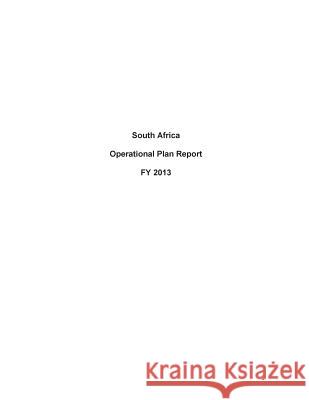South Africa Operational Plan Report FY 2013 » książka
South Africa Operational Plan Report FY 2013
ISBN-13: 9781503194199 / Angielski / Miękka / 2014 / 522 str.
South Africa has four concurrent health burdens that heavily impact the health sector - HIV/AIDS and TB, poverty related illnesses (perinatal, neonatal, childhood, and maternal diseases), non-communicable diseases, and violence and injury. South Africa continues to grapple with massive health inequities, a legacy of apartheid. There are marked differences in rates of disease and mortality between races (National Planning Commission Report, 2011). Redacted] Child mortality initially increased from the MDG baseline in 1990 of 60 deaths under the age of 5 years per 1,000 live births, peaked at 82 deaths/1,000 births in 2003, and finally decreased to 57 deaths/1,000 births in 2010. The maternal mortality ratio is an estimated 310 maternal deaths per 100,000 live births (2008) . HIV and its related diseases contribute significantly to maternal mortality (50%) and mortality under five years of age (35%). South Africa has a population of nearly 52 million and the largest HIV epidemic in the world, with approximately 5.7 million people living with HIV (PLHIV). Similar to other generalized, hyper-endemic HIV epidemics, the South African epidemic is largely driven by heterosexual transmission. HIV prevalence among the adult population (15-49 years) is estimated to be 16.6%, with an estimated HIV incidence of 1.4% in 2011, though prevalence and incidence vary significantly across geographic areas with 54% of PLHIV living in Gauteng and KwaZulu Natal Provinces. Antenatal HIV prevalence has stabilized around 30% over the past four years with women and girls bearing approximately 60% of the overall HIV disease burden. There are a number of underlying behavioral, socio-cultural, economic, and structural factors that influence risk for HIV transmission. Risk factors include mobility and migration, race, economic and educational status, alcohol and drug use, early sexual debut, sexual violence, and low levels of consistent condom use, especially in longer-term relationships and in pregnancy/post-partum. Of particular relevance, gender dynamics and unequal power relations between men and women play a significant role in heterosexual HIV transmission. A 2011 report by the Desmond Tutu HIV Foundation, estimates one third of young girls in South Africa indicate have a forced first sexual experience, and nearly 75% have had at least one non-consensual sexual encounter. In addition, there are low and/or late marriage rates across all populations and unstable long-term relationships that can lead to multiple concurrent partnerships and potentially foster HIV transmission through complex, linked sexual networks, especially where there is high population mobility.











